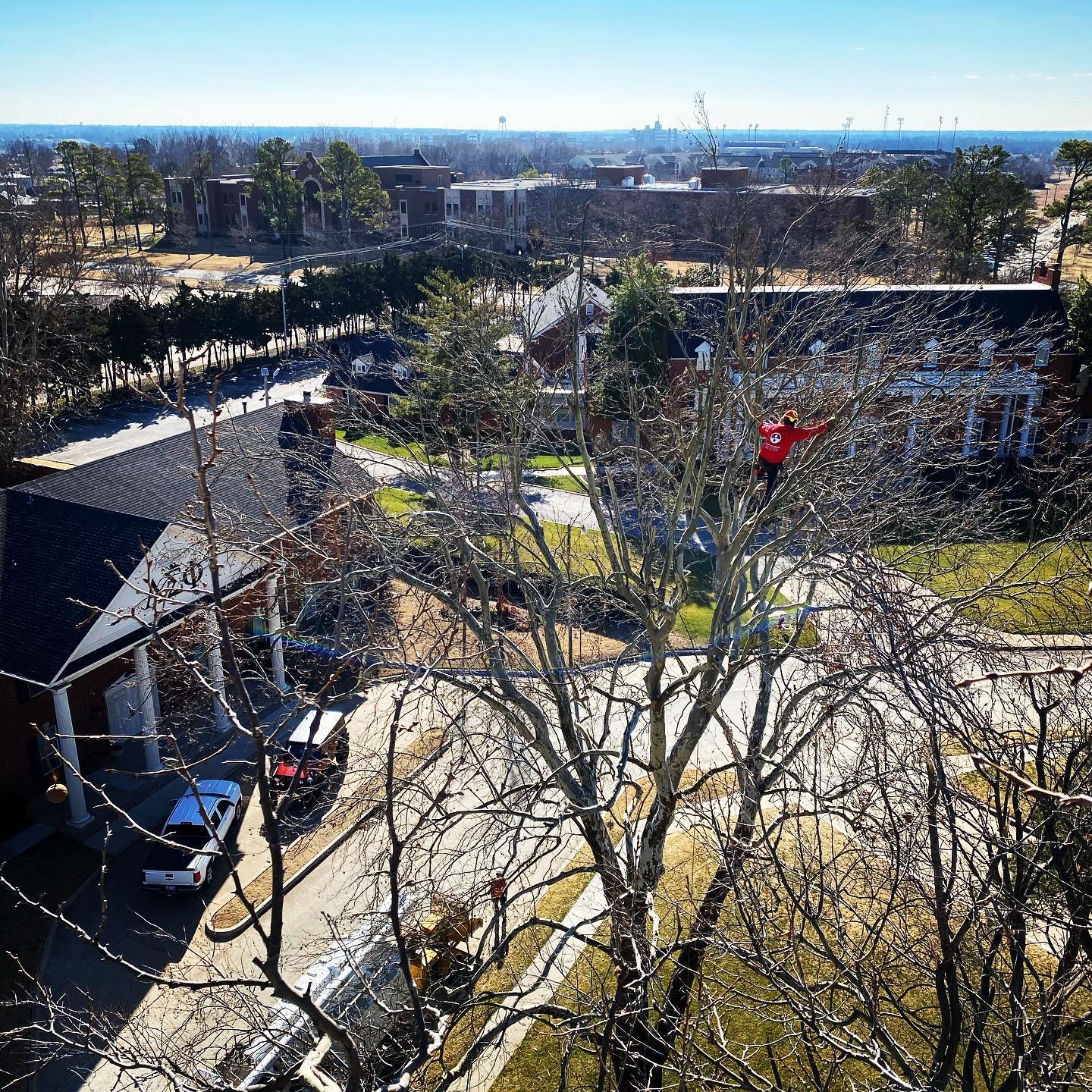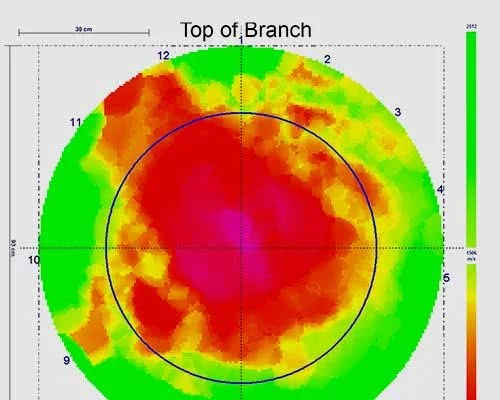is it safe?
Trees need to be protected and saved, but at what point is the risk too much?
We can help you answer the sometimes impossible question.

Seemingly safe trees fail in calm weather and obviously dangerous trees stand for hundreds of years

Warning flags
If you know where to look trees send warning flags of their health and structural integrity. From identifying wood decay organisms, insect issues, and being able to read different types of wood that trees produce trained arborist can make accurate predictions of risk.
In addition to reading the signs the tree gives us we also have one of the only Rinntech Resistographs in Oklahoma that can measure the sound wood vs. decayed wood inside your beloved tree. With the reading the resistograph gives us we can see the age of your tree to a certain size and how decayed it is on the inside before anyone makes the wrong guess and cuts it down.
Tree Risk Assessment
Levels
Level 1 Visual Assessment
Level 2 Basic Assessment
During a Level 2 Basic assessment, Arborists walk completely around a tree and look for defects in all visible areas of a tree, including the surrounding area. These assessments include the use of a rubber mallet for "sounding" the tree and probes that can be used to evaluate open cavities. During an inventory, or as part of a tree risk assessment project, the Arborist can determine whether some aspect of tree structure or health indicates that a more comprehensive tree structure evaluation (Level 3 Advanced assessment) is needed to more thoroughly evaluate tree condition and risk of failure. Whether part of an inventory or as a separate project, trees are presented in a risk assessment and mitigation report with noted defects and observations.
Level 3 Advanced Assessment
Level 3 Advanced assessments are assessments of the roots, stem, or crown of a tree. These assessments may include climbing inspections, examination of the root system using a compressed-air tool (that avoids damage to roots and underground utilities), or resistance drilling using a resistograph that produces a visual representation of internal conditions based on resistance. With these results our ISA Board Certified Master Arborist can recommend options for mitigation, maintenance, or removal. The results are presented in a tree risk assessment report that includes all field observations, pictures, testing results, and recommendation options.
Level one assessments are limited visual assessments designed to cover large quantities of trees. Usually given from a vehicle or sidewalk to flag higher trees needing level 2 or 3 assessments. Minimal amount of details are recorded.



